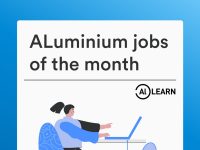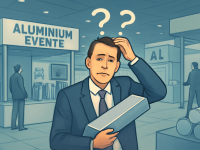The US aluminium industry finds itself once again under the heavy cloud of uncertainty. For years, trade measures have been used as a tool to protect domestic production, yet instead of generating clarity, they have created an unstable environment that complicates decision-making from the boardroom of a primary smelter to the operations floor of a secondary recycler.
That’s the tariff doing
Every new announcement about tariffs reshapes the landscape, shifts pricing expectations and leaves market participants wondering whether to move forward with investments or postpone them indefinitely. What was supposed to be a shield for the industry has become a constant reminder of how fragile the rules of the game have become.
Image for representational purpose
The core of the issue is that aluminium is not just another commodity; it is a strategic material at the heart of national security, infrastructure, automotive, aerospace and packaging. In the US, the domestic smelting capacity represents only a fraction of demand, with less than one million tonnes of primary aluminium produced annually against a need several times higher.
Imports have always filled the gap, especially from Canada, the Middle East and other reliable partners. When tariffs were imposed under Section 232, the logic was to give domestic smelters breathing room, but the reality has been far more complex. Costs have risen across the board, and while some facilities managed to restart, energy prices and outdated infrastructure keep the US primary aluminium among the most expensive in the world.
A hassle for primary producers or gain?
For primary producers, tariffs brought a short-lived sense of relief. The ability to sell at higher prices insulated them from foreign competition, but the structural problems did not disappear. Power contracts in the US remain far less favourable than in hydro-rich Canada or gas-based smelters in the Middle East.
The facilities that survived are ageing, requiring billions in reinvestment, and those billions cannot be committed under a trade framework that changes with every political cycle. Tariffs may protect smelters from foreign competition, but they cannot guarantee the capital inflows needed for long-term sustainability.
A wider gameplay for the secondary sector
The story is even more complex for the secondary sector, the real workhorse of the US aluminium ecosystem. Recycling accounts for more than 70 per cent of the aluminium flowing through the market, a remarkable achievement that combines economic efficiency with sustainability. It is the recycler that gives the US a competitive edge, not only by reducing dependency on imports but by dramatically lowering the carbon footprint of production.
Yet, paradoxically, it is precisely the recycler that suffers most from tariff-induced distortions. Imported scrap, whether Twitch, Zorba, or used beverage cans, becomes more expensive or less available, while domestic demand continues to grow. Processors face squeezed margins, volatile premiums and constant uncertainty about whether their investments will yield predictable returns. The projects that could improve recovery rates, such as advanced sorting lines, chip dryers and high-efficiency furnaces, are postponed until the fog of uncertainty clears.
Suffering for the end-use sectors
The ripple effects extend across the value chain. Automakers hesitate to commit to contracts when the Midwest Premium swings not because of supply and demand fundamentals but because of political decisions in Washington.
Packaging companies see their cost structures fluctuate in ways that undermine long-term planning. Construction suppliers, caught between rising costs and competitive pressures, face delays in project execution. The result is a market in which hesitation becomes the norm. Deals are harder to close, financing becomes more cautious, and growth opportunities are put on hold.
This uncertainty weighs heavily on the ability of the US to compete globally. While China continues to expand its integrated model of bauxite-to-smelter-to-semi-finished products and Europe positions itself with initiatives around “green aluminium” supported by policy incentives, the US remains stuck in a cycle of short-term protection and long-term hesitation. The irony is stark: the very policies designed to strengthen domestic aluminium production risk weakening the country’s position in the international market by discouraging investment and innovation.
A protection or just a strategic dilemma
At the heart of the debate lies a strategic dilemma. Tariffs provide some protection for primary smelters, ensuring that a base level of domestic production survives, but they simultaneously undermine the downstream industries that consume far more aluminium than those smelters can provide.
They add costs to sectors like automotive and aerospace, where global competition is unforgiving, and they disrupt the recycling ecosystem that should be at the centre of the US decarbonisation strategy. In other words, tariffs keep alive the weakest link while destabilising the strongest.
Price surge due to the tariff
The pricing mechanism most emblematic of this distortion is the Midwest Premium. Intended initially to reflect logistical and market realities, it has become a proxy for tariff policy, rising and falling not on fundamentals but on political announcements.
Image for representational purpose
This undermines confidence in long-term contracts and erodes the predictability that capital-intensive industries require. Investors do not commit hundreds of millions of dollars to projects when the return depends more on a presidential tweet than on supply-demand balance.
Tariffs affecting aluminium recycling, too?
The consequences reach beyond economics into sustainability. Recycling aluminium saves 95 per cent of the energy compared to primary production, making it a cornerstone of US climate goals. Yet by restricting scrap flows and creating artificial price distortions, tariffs make recycling less competitive.
Instead of scaling up the most efficient and greenest part of the industry, the country risks handicapping it. Every tonne of aluminium that fails to be recycled because of distorted incentives means more energy consumed, more emissions released and more dependency on imports.
Uncertainty is corrosive. It delays investments, increases costs and erodes confidence. The US aluminium industry cannot thrive if its future depends on shifting political calculations rather than a clear industrial strategy. The way forward must involve more than tariffs; it requires a holistic framework that combines competitiveness, stability and sustainability.
Competitiveness means investing in energy efficiency, modernising smelters and supporting advanced recycling. Stability means providing long-term clarity in trade and industrial policy so that companies can plan decades into the future. Sustainability means placing recycling at the heart of the strategy, recognising its unmatched contribution to decarbonisation.
Aluminium: The future of the US
Aluminium is not just a metal, it is the backbone of electric vehicles, renewable energy, modern construction and sustainable packaging. Its future in the US cannot be left to the uncertainties of trade disputes and election cycles. The industry needs clarity and it needs it now. Without it, the US risks falling behind in the very sectors that will define the next generation of economic and environmental leadership.
The lesson is simple: tariffs may offer short-term relief, but they do not solve long-term challenges. Instead, they introduce uncertainty that spreads through every layer of the market, from smelters to recyclers, from automakers to consumers. The cost of doing business in American aluminium today is not just measured in dollars per tonne; it is measured in the uncertainty that clouds every decision. Until that uncertainty is resolved with a coherent, forward-looking strategy, the US aluminium industry will continue to live under its shadow.
















